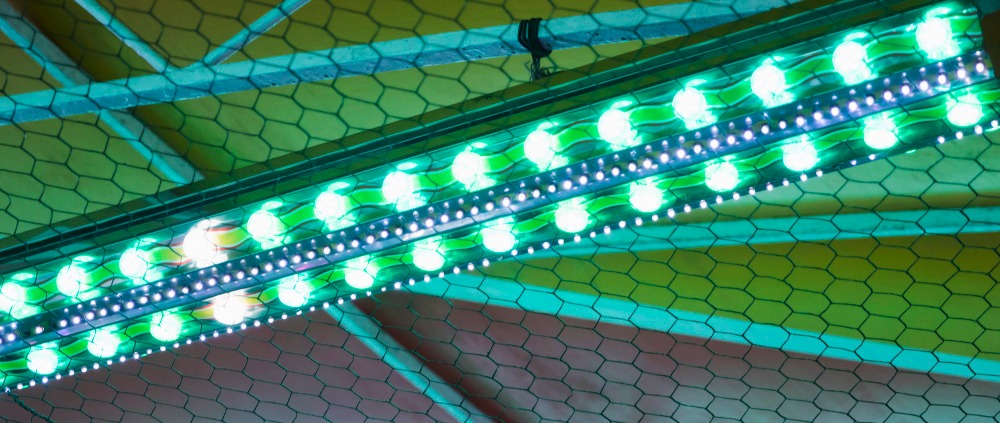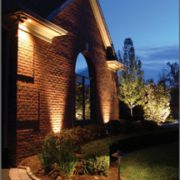Best LED Color Temperature Outdoors
LED Color Temperature: Outdoor lighting plays a crucial role in enhancing the beauty and safety of your home’s exterior. It can highlight architectural features, illuminate pathways, and create a warm and welcoming atmosphere. One of the most important factors to consider when choosing outdoor lighting is the color temperature of the LED bulbs. This article will discuss the best LED color temperature for outdoor lighting.
What is LED Color Temperature?
LED color temperature measures the hue of the light emitted by a bulb. It is measured in Kelvin (K) and ranges from warm to cool. Warm light contains a lower color temperature, while cool light has a higher temperature. The color temperature of LED bulbs can range from 2000K to 6500K, with warm white being around 2700K and cool white being around 5000K.
What LED Color Temperature to Use?
The optimal LED color temperature for outdoor lighting varies based on the intended function of the light and the preferred ambiance. Consider common outdoor lighting applications and the recommended LED color temperature.
1. Security Lighting
Security lighting is made to deter intruders and provide visibility in dark areas. For security lighting, it is recommended to use cool white LED bulbs with a color temperature of 5000K or higher. Cool white light provides better visibility and can help to identify potential threats.
2. Pathway Lighting
Pathway lighting guides people along walkways, driveways, and stairs. For pathway lighting, it is recommended to use warm white LED bulbs with a color temperature of 2700K to 3000K. Warm white light creates a cozy and welcoming atmosphere and is easy on the eyes.
3. Accent Lighting
Accent lighting highlights architectural features, landscape elements, or other outdoor features. For accent lighting, it is recommended to use a range of LED color temperatures depending on the desired effect. Warm white LED bulbs with a color temperature of 2000K to 3000K can create a soft and romantic atmosphere, while cool white LED bulbs with a color temperature of 4000K to 5000K can create a modern and sophisticated look. It is best to use bulbs with a color temperature of 4600K to 6500K for a crisp and bright effect, ideal for highlighting sculptures, fountains, or other prominent features in your outdoor space.
4. Flood Lighting
Flood lighting is used to illuminate large areas, such as parking lots, sports fields, and outdoor events. For floodlighting, it is recommended to use cool white LED bulbs with a color temperature of 5000K or higher. Cool white light provides better visibility and can cover a larger area.
5. Deck and Patio Lighting
Deck and patio lighting creates a relaxing atmosphere and enhances the beauty of outdoor living spaces. For deck and patio lighting, it is recommended to use warm white LED bulbs with a color temperature of 2000K to 3000K. Warm white light creates a cozy and inviting atmosphere and is perfect for outdoor entertaining.
Understanding LED Color Temperature
Color temperature is a measure of the color of light emitted by a light source, quantified in degrees Kelvin (K). It describes how “warm” or “cool” the light appears, influencing the mood and atmosphere of a space.
The Kelvin Scale
- Warm White (2200K – 3000K): This range produces a soft, cozy light similar to traditional incandescent bulbs. It’s ideal for residential spaces like living rooms, bedrooms, and dining areas, creating a welcoming and relaxed atmosphere.
- Neutral White (3500K – 4100K): Neutral white light has a balanced tone that works well in kitchens, bathrooms, and offices. It provides clarity and is often used in commercial settings for a clean, professional look.
- Cool White (5000K – 6500K): This range emits a bright, bluish-white light, resembling daylight. It’s often used in workspaces, garages, or retail environments where high visibility and alertness are important.
- Daylight (6500K and above): This temperature mimics natural daylight and is ideal for tasks requiring color accuracy, such as art studios or display areas.
Effects of Color Temperature
- Mood and Ambiance: Warm lighting tends to create a cozy, intimate feel, while cool lighting can feel more energizing and alert. Choosing the right color temperature can enhance the desired mood of a space.
- Visual Perception: Different color temperatures can affect how colors are perceived. Warmer lights may make colors appear richer, while cooler lights can enhance clarity and detail.
- Functionality: In areas where tasks are performed, such as kitchens and workspaces, cooler temperatures can improve visibility and focus.
Choosing the Right Color Temperature
- Consider the Purpose of the Space: Think about how the space will be used. For relaxation, warmer tones are preferable; for work, cooler tones are more suitable.
- Match Existing Fixtures: If you’re integrating new LED lighting into a space with existing fixtures, match the color temperature to create a cohesive look.
- Test Before Committing: If possible, try out different LED bulbs in the desired space to see how they interact with wall colors, furnishings, and overall decor.
- Use Dimmers: Installing dimmable LEDs allows you to adjust brightness and warmth, providing flexibility for different activities and moods.
Conclusion
Choosing the right LED color temperature for outdoor lighting can make a significant difference in the look and feel of your outdoor space. It is essential to consider the purpose of the lighting and the desired atmosphere before selecting the LED color temperature. With these recommendations in mind, you can select the LED color temperature for your outdoor lighting needs and enhance the beauty and safety of your home’s exterior.
Illuminate your outdoor living space with the help of Charlotte Lighting & Hardscapes, your trusted lighting specialist. Discover our wide range of innovative solutions and create the perfect ambiance for your backyard oasis. Get in touch with us today!
read more at wiki
schedule a consultation













